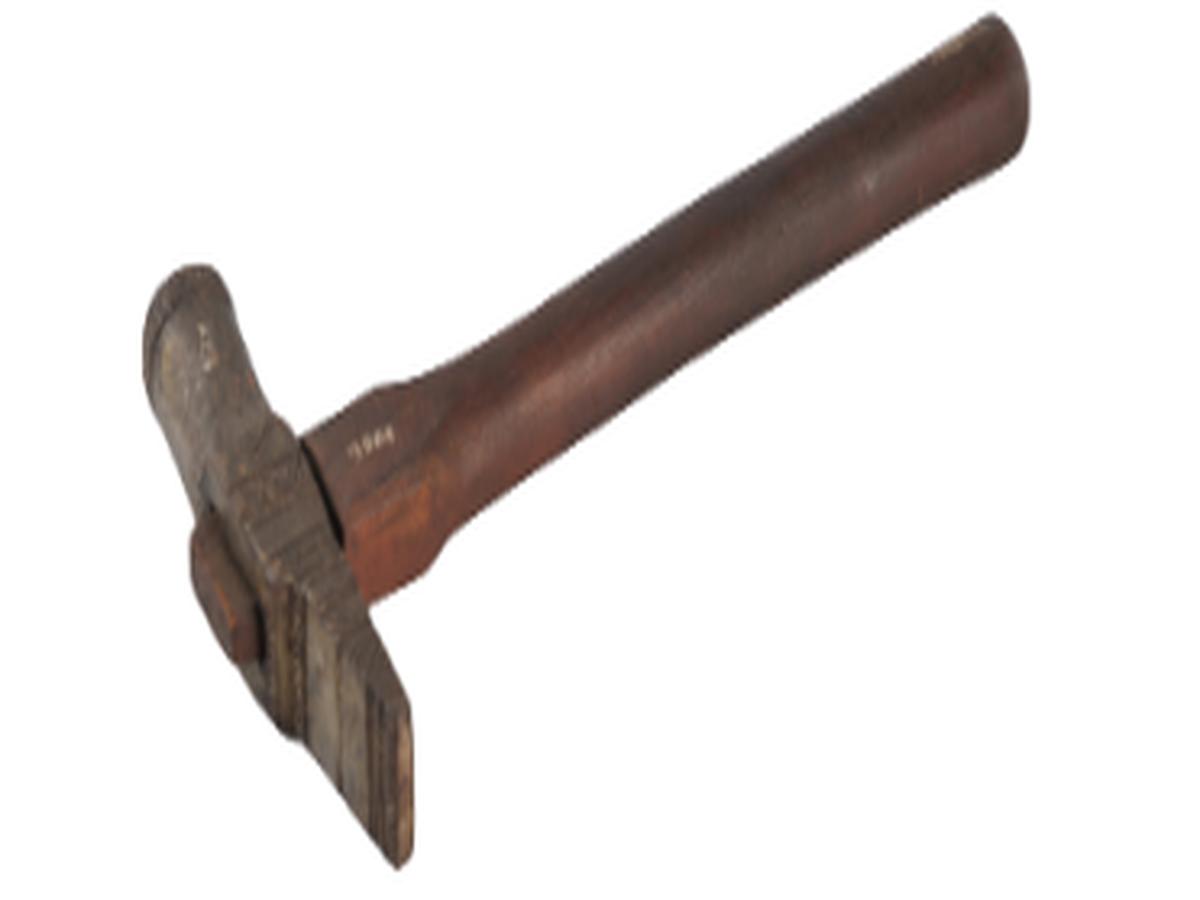State
Tribe Name
Art Type
short description
Traditionally, this hammer belonged to the Kota tribesmen inhabiting the Nilgiri Hills of Tamil Nadu. This is a beautiful specimen of a hammer, giving the merit of being one of the best examples to illustrate tribal artistry, blending artistic embellishment with functional usage. It comprises a metal head and a wooden handle, both just about perfectly suited to the daily utility, such as those related to blacksmithing, carpentry, or house utility.The hammerhead may well have been practically designed for striking things and sounding a rounded blunt end at the opposite end so that it could be used for shaping or featuring softer impacts at other times. A rectangular hole in the middle of the flat sides within the metal head receives the flat rectangular end of the handle so that it will fit in place securely, ensuring an exact attachment. This head is ornamented with fine incised transverse lines showing an example of artistic concern that is marker out in the material culture of the Kota tribesmen.
Thumbnail

Filter Postion
Left
Filter Background
Off
Theme
Filter Header Image

content
Image

description
Traditionally, this hammer belonged to the Kota tribesmen inhabiting the Nilgiri Hills of Tamil Nadu. This is a beautiful specimen of a hammer, giving the merit of being one of the best examples to illustrate tribal artistry, blending artistic embellishment with functional usage. It comprises a metal head and a wooden handle, both just about perfectly suited to the daily utility, such as those related to blacksmithing, carpentry, or house utility.The hammerhead may well have been practically designed for striking things and sounding a rounded blunt end at the opposite end so that it could be used for shaping or featuring softer impacts at other times. A rectangular hole in the middle of the flat sides within the metal head receives the flat rectangular end of the handle so that it will fit in place securely, ensuring an exact attachment. This head is ornamented with fine incised transverse lines showing an example of artistic concern that is marker out in the material culture of the Kota tribesmen.
Not only does the long wooden handle bring balance and control, but it also speaks to the tribe's deep-rooted reliance on natural resources, usually derived from native hardwoods reputed for their strength and durability. Now at the Indian Museum, Kolkata, the hammer is no longer only a tool; it is a cultural artifact in itself. It typifies the sustainable lifestyle in a task-related handiwork of the Kota tribe and serves to narrate some aspects of the daily life or usages of the tribe in terms of their tool-making traditions. Such ethnographic items serve an invaluable purpose towards an understanding of the indigenous technologies and the aesthetic possibilities that are worked into utilitarian items.
Not only does the long wooden handle bring balance and control, but it also speaks to the tribe's deep-rooted reliance on natural resources, usually derived from native hardwoods reputed for their strength and durability. Now at the Indian Museum, Kolkata, the hammer is no longer only a tool; it is a cultural artifact in itself. It typifies the sustainable lifestyle in a task-related handiwork of the Kota tribe and serves to narrate some aspects of the daily life or usages of the tribe in terms of their tool-making traditions. Such ethnographic items serve an invaluable purpose towards an understanding of the indigenous technologies and the aesthetic possibilities that are worked into utilitarian items.
Image Mode
landscape
promoted
On
Verified
Off
